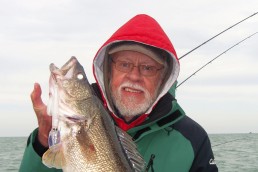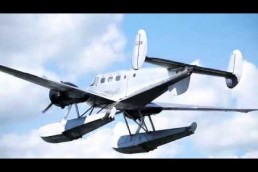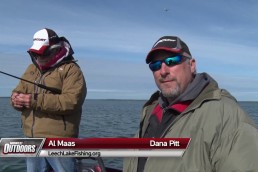Heading North to Walleye World: What to Bring
SHARE THIS POST
John Bennett catches Canada Fever and is heading north to Ontario
By the time you read this, I will be heading north in hopes of catching a few walleyes once the ice has retreated from the northern shield lakes. My destination will be northern Ontario. After having read the Canada Fever sections in MidWest Outdoors and after having watched countless fishing videos on YouTube, my pulse races when I think about catching and then eating the golden-hued walleye.
It is never too early to begin making plans and booking reservations for a big trip. Almost any veteran walleye angler will advise a novice to begin planning by making a list of the essential items. Once the list is completed, pare it down to a manageable amount of gear. After having visited both fly-in and drive-to lakes, and after having strained my back lugging my gear into an outpost cabin, I can testify to the validity of such advice.
Regardless of whether you decide to pack everything you own or take only the basics when heading north, a few fundamental items of fishing gear greatly increase your odds for success.
How to hook ’em
Most anglers heading north target the ubiquitous walleye and the sleek, fang-faced northern pike for net, camera and frying pan. If I had to choose one system of fishing with which to begin, it would be some type of trolled live-bait rig. Under most conditions, there is nothing simpler or better than the Lindy Rig. (Invented by the Lindner brothers more than 50 years ago.) The components for this rig—hooks, weights, swivels and floating jigheads—are small. Small enough that I can carry everything in a compartmentalized plastic box in my larger tackle box.
Basically, with a juicy nightcrawler, or a black leech hooked, anglers troll the Lindy rig as slowly as possible over or along the sides of rocky points stay parallel to shorelines when the fish are making a migration to deeper water, over any humps or reefs with ledges dropping into deeper water. If you think you are going too fast, try back-trolling or shutting off the motor and drifting with the wind. The biggest walleye I ever caught in Ontario, a 9-pound-plus, was taken on a Lindy rig. I hooked it with a big black leech while my partner and I drifted over a submerged weed bed.
Rigging for success
Create a variation on the Lindy rig by adding a variety of beads, clevises and spinnerbait blades, then attaching the same types of live bait. Trolled behind Church Tackle Company planer boards, they are deadly on walleyes and most northern predatory fish. For most of your trolling needs, check out their fine products at churchtackle.com.
Are you enjoying this post?
You can be among the first to get the latest info on where to go, what to use and how to use it!
To the collection of live bait rigs, add about a dozen or two Rapala Minnows in sizes, 9, 11, and 13 and a handful of Rapala Husky Jerks in similar sizes. With colors such as blue/silver, black/gold, firetiger, or natural perch colors, you have some of the best walleye lures on the planet. A few years ago, I landed a true 30-inch walleye on a Husky Jerk in Purple Perch pattern.
When you find suspended walleyes and need to dig them out of the depths, switch to some of the long-billed Rapalas, Storm Hot-N-Tots or Cordell Deep Red Fins in the above-mentioned colors. A Hot-N-Tot in plain gold can be awesome, too. Over the decades, gold has been proven to be one of the best go-to colors for both walleyes and pike. It is a color fish like, so I stick with it.
Bring big brass ones
Northern pike and walleyes both fall prey to the allure of a 2 1/2- to 3-inch hammered brass spoon. In fact, if I were limited to only two lures for fishing up north, this would be one of them. Cast it to the edge of weedlines and over submerged weeds or rocky points. A steady retrieve is best. If it fails to produce, stop the lure and let it flutter into the depths for a few seconds. Then, resume the retrieve. Sometimes this break in the action provokes an attack from predatory fish.
I cannot say that I don’t occasionally take more along than I should on a fishing trip. But, these are some of the tried-and-true lures and fishing systems that consistently produce fish. I wouldn’t leave home without them.
Need more tips? We’ve got the scoop on jigging up early season walleyes.
MWO
SHARE THIS POST
Did you enjoy this post?
You can be among the first to get the latest info on where to go, what to use and how to use it!
John Bennett
John Bennett is a retired history teacher, historical re-enactor, father and grandfather. As a four-season outdoorsman, his passion is waterfowl hunting and fishing for smallmouth bass. He lives in Ohio and spends quite a bit of time in his primitive log cabin, which he built.



